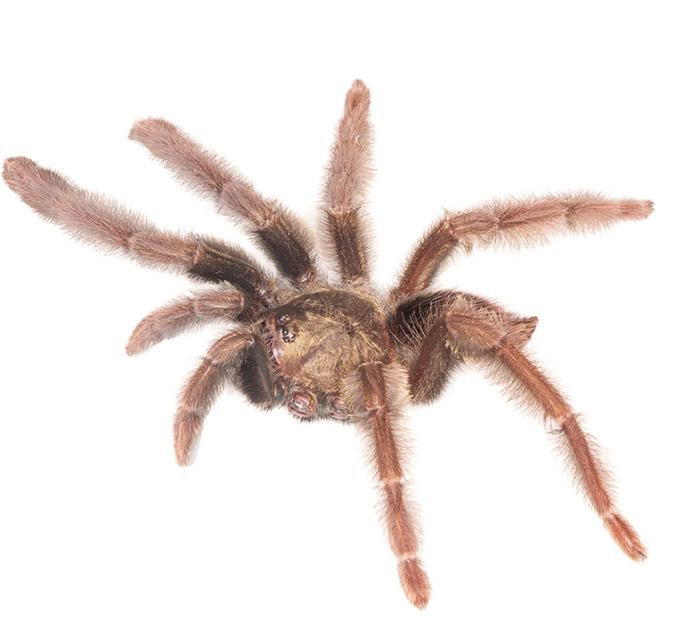In the depths of Ecuador’s wilderness, scientists have unveiled the presence of two new tarantula species. Researchers of Universidad San Francisco de Quito found them on trees on the slopes of the Andes in the western part of the country.

Credit: Peñaherrera-R. P, León-E. RJ
In the depths of Ecuador’s wilderness, scientists have unveiled the presence of two new tarantula species. Researchers of Universidad San Francisco de Quito found them on trees on the slopes of the Andes in the western part of the country.
Meet Ecuador’s newest tarantulas
One of them was found in late February 2023, 1.5 m above the forest floor in the foothill evergreen forest of the Cordillera Occidental . Just discovered, it is already seriously threatened as people use its habitat for mining and agriculture. Its scientific name reflects this vulnerability: the tarantula is called Psalmopoeus chronoarachne, from the Greek words for “time” and “spider.”
“The compound word refers to the adage that these spiders could ‘have their time counted’ or reduced by impactful anthropogenic activities. The name addresses conservation concerns about the survival and prevalence of spider species in natural environments,” they write in their paper, which was just published in the open-access journal ZooKeys.
The other newly discovered tarantula has an even more curious name: Psalmopoeus satanas. “It is appropriately named because the initial individual that was collected had an attitude!” says researcher Roberto J. León-E, who first spotted it in a bamboo fence in San José de Alluriquín. The spider immediately exhibited defensive behavior; “this behavior then transformed into fleeing, where the spider made quick sporadic movements, nearly too fast to see.”
It was the first tarantula he ever caught.
“The members of the Mygalomorphae Research Group in the Laboratory of Terrestrial Zoology at Universidad San Francisco de Quito grew very fond of this individual during its care, in spite of the individual’s bad temperament and sporadic attacks (reason for the nickname),” he writes in the paper.
The species, which can be found in in the north of the Cordillera Occidental of the Andes at about 900 m above sea level, is facing serious threats as its habitat is degraded, ever declining, and severely fragmented by cropland and mining concessions and expanding urban and agricultural territories.
Critically endangered: threats to tarantula survival
“It is important to consider that the areas in which these arthropods live are not under legal protection. The implementation of protected areas in these localities is essential to maintain the remaining population of these endangered species and to encourage research on the remaining undescribed or unknown tarantula species in the area,” says Pedro Peñaherrera-R, who led the research on these animals.
This makes the region highly vulnerable to both legal and illegal mining operations that extract metals such as copper, silver, and gold, introducing pollutants to its ecosystems.
The implementation of stricter regulations and penalties for illegal mining or other extracting-related activities, including specimen smuggling, might help these species survive. Likewise, the engaging and educating of local communities about the importance of biodiversity conservation is essential to avoid further extinction.
“We encourage future work by Ecuadorian and international researchers, organisations, and governments to effectively understand the reality about the threat of tarantula smuggling and the required conservation status of each species in the country.” Says Roberto J. León-E.
Based on initial conservation assessments, both tarantulas meet the criteria for being considered Critically Endangered by International Union for Conservation of Nature.
“It is essential to consider the potential loss of both P. chronoarachne and P. satanas and the ecological consequences that would result from their extinctions. These species may serve essential roles in the stratified micro-ecosystems in their respective areas,” the researchers write in their paper.
The dark side: illegal trade in wild tarantulas
Illegal trade in wild tarantulas as pets is also a latent threat, not only to these two species, but to Ecuadorian tarantulas in general. Many tarantula species can be found for sale online on various websites and Facebook groups. “During the writing of this article and the publication of another article, we found that a species that we described (Neischnocolus cisnerosi) is currently in the illegal pet trade!” says Pedro Peñaherrera-R.
After studying papers on wild-caught pet-trade specimens, the researchers conclude that the issue has been going on for more than 30 years in the country. “Although this series of publications encouraged research on Ecuadorian tarantulas previously ignored for centuries, they also functioned as catalysts within the exotic pet-trade hobby, aiding in obtaining these species and further encouraging people to collect undescribed species,” says Pedro Peñaherrera-R with concern.
Original source:
Peñaherrera-R. P, León-E. RJ (2023) On Psalmopoeus Pocock, 1895 (Araneae, Theraphosidae) species and tarantula conservation in Ecuador. ZooKeys 1186: 185-205. https://doi.org/10.3897/zookeys.1186.108991
Journal
ZooKeys
DOI
10.3897/zookeys.1186.108991
Article Title
On Psalmopoeus Pocock, 1895 (Araneae, Theraphosidae) species and tarantula conservation in Ecuador
Article Publication Date
13-Dec-2023




